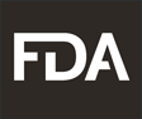January 5, 2023

The U.S. Food and Drug Administration (FDA) has been working to ensure the judicious use of antibiotics to slow the development of antimicrobial resistance and preserve the effectiveness of antimicrobials for fighting disease in animals and humans. Toward these objectives, the FDA issued antimicrobial guidance for use in production animals back in 2013. They also issued updated guidance on the veterinary feed directive in 2015. Drug manufacturers updated the label usage to comply with this guidance. That same year, the FDA began generating annual summary reports on antimicrobials sold or distributed for use in Food-Producing animals. FDA’s report shows that since sales peaked in 2015, antibiotics sold have decreased by 38%. There are a few downfalls to the report. Notably, the report provides sales data for antimicrobials but does not provide data on usage. It is unknown if the antibiotics are given to the animal, and for drugs available to multiple species, it is also unknown which animal the drugs are intended. It is important to note that antimicrobial use in livestock in the U.S. appears higher than in other countries partially because FDA, unlike its counterparts in Europe and other parts of the world, classifies ionophores as antimicrobials. Another shortcoming of the report is the focus on total volume sold, without regard to the class of antibiotic. New-generation drugs–which should be the most protected and least utilized–often require fewer grams to achieve effective dosage vs. older antibiotics. As such, the user of older and less effective antibiotics, which is preferred, results in more grams of antibiotics being given.
The FDA also recognizes that "evaluating the progress of ongoing efforts to support judicious use of antimicrobials, it is important to consider additional information sources including actual use data, animal demographics, animal health data, and data on antimicrobial resistance." To help achieve this goal, Randall Singer, DVM, Ph.D., at the University of Minnesota, is partnering with U.S. Poultry & Egg through a research project and is working within the poultry industry to answer questions relating to antimicrobials. Participation by the layer industry is new this year, making this year's Antibiotic Stewardship within U.S. Poultry Production, especially of interest to the U.S. layer industry. Additional antibiotic stewardship information can be found HERE.
A few highlights:
Click here for the FDA Annual Summary Report on Antimicrobials Sold or Distributed in 2021.
For video, photos and other resources, view Resources.
For media inquiries or
interview requests, contact Hinda Mitchell.